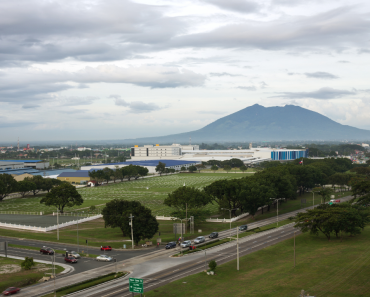The carabao is a freshwater buffalo that may be found in Southeast Asian countries like the Philippines. It has a significant position in Philippine mythology, representing hard work and perseverance, which are prized qualities among Filipinos. The carabao thus became the Philippines’ national animal.
The Carabao (Bubalus bubalis) is frequently mistaken for a big rock, a puddle with enormous horns, or a huge black roadblock. Despite its name, the swamp-loving Philippine domesticated water buffalo can be found all throughout rural South East Asia. There are two distinct theories regarding the origin of the Carabua in the Philippines. The first claims that they were originally brought to the country by Malay settlers in 300 BC. Another hypothesis is that a species of Swamp Water buffalo from China’s Chekiang Province was introduced in the 1500s, as well as other buffaloes from India and Pakistan. Regardless of when they were imported, the Carabao proliferated, with current populations ranging between 3 million and 8 million across the Philippines.
The carabao is an important part of the Philippine economy and a fixture in Filipino culture. The economic power of the carabao to draw objects contributes 1.48 million dollars to the Philippine economy. This is due to the significance of the Carabao in agriculture, among other things. Because they are strong enough to plow rice fields as well as other crop fields, a benefit that weighing half a ton allows them is that they may be found pulling timber and other goods on carts called kariton (cart) and kareta (sled).
So, why use the Carabao? Why not utilize contemporary equipment? Many farmers, however, own little properties with low earnings. Furthermore, some farming is done in areas where machinery would be unable to function owing to a difficult-to-access environment. As a result, it’s tough to imagine Filipino agriculture without the Carabao woven into its fate.
Twice, the agricultural sector was harmed by a reduction in the carabao population. Numbers fell dramatically during the 1900s when the disease spread. Another obstacle was an invasion of locusts, which destroyed the crop that was fed to the Carabao as food. The carabao population plummeted by 90%. There was a significant reduction in agricultural yields as a result of this. The second time that a huge population decrease occurred was during World War II. The Japanese had invaded the Philippines and shot Carabao believing they were being used to transport weapons for guerilla fighters. Once again, the population plummeted, and agricultural yields dropped dramatically.
The Philippines recovered, just like the Carabao’s hard and elastic hide. The Carabao is now common in the agricultural sector for working in the fields as well as for its milk and meat, both of which are essential to the economy. Carabao milk has grown in popularity, and there is even a farmers’ cooperative known as “PAC” throughout the Philippines that focuses on ensuring they produce healthy buffalo and establish safe husbandry and care standards.
Despite all the difficulties, the Carabao has bounced back every time. This is also true for many other individuals whose livelihoods are linked to the Carabao’s productivity and who are plagued with problems as a result of it. Despite its robust build and ability to make even sitting in a puddle appear playful and comfortable, the Carabao represents the bravery, determination, and perseverance of the Philippines and its people. When you talk to Filipinos from all over the country, it’s no surprise that they’re proud of their roots and national animal.



